Do Asians Own Kuih Loyang?
Although most of us claim that the cookie is Malaysian, there are variations and one of it is called rosette cookie from Norway.
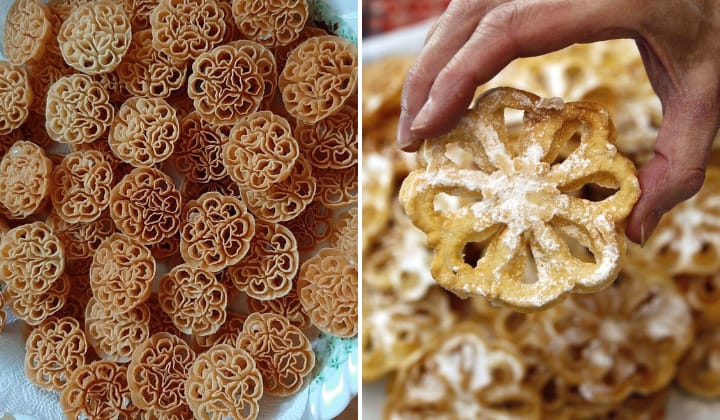
Subscribe to our FREE Newsletter, or Telegram and WhatsApp channels for the latest stories and updates.
Believe it or not, Kuih Loyang (kuih goyang, ros, cap, cuan, sarang tebuan, bunga durian and acuan – other variations in Malay) isn’t uniquely Malaysia.
You would think the cookie or fritter that we have every celebration – Eid, Deepavali, Chinese New Year, Gawai, Kaamatan would hail from Malaysia, wouldn’t it? But other places such as the Scandinavian countries (Norway, Sweden & Denmark) have their version too. And it’s called the Rosette, Rose or Honeycomb cookie.
Thanks to the viral video made by Chef Reynold Poernomo where he made a next-level Rosette cookie, people all around the world commented on the video, claiming that that was their traditional dish.
@reynoldpoer An old but gold of a snack The Rosette – orginated from Scandinavia, this little snack has made it’s way influencing the world wirh many cultures taking their traditional version of it. Filled with egg yolk jam, smoked chutoro (Tuna Belly), jamon cream and topped with N25 kaluga hybrid caviar #rosette #snack #food #caviar ♬ Theme from "A Summer Place" – Percy Faith And His Orchestra
So, why is everyone claiming that it’s theirs? Where did it actually come from?
Origins and colonization
To answer all of your questions, and to validate Chef Reynold’s caption of the video, yes, the dish originated from Scandinavia. Norway to be specific, but there’s no record of when or what year the dish surfaced. Did they exist way before during the Vikings? Nobody really knew.
In Norway, Rosettbakkels or rosetter are very delicate but delicious cookies made for many generations and are usually made during the holidays. There, they are also made together with timbales, a sort of pastry crust that you can put in fillings like custard, cream and fruits.
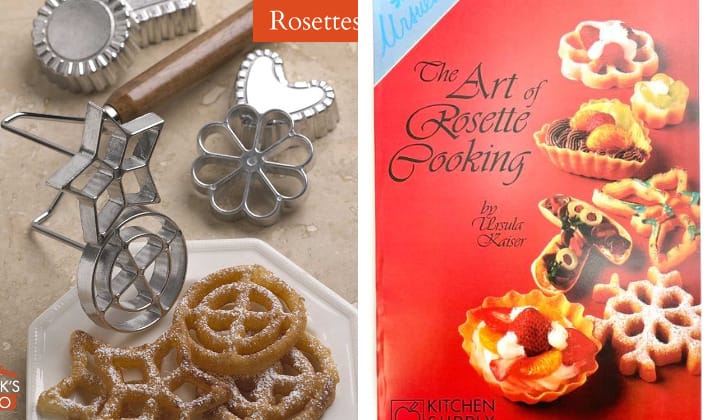
However, another source states that the dish was brought to various countries by the Dutch. How did it get to the Netherlands? Did the Vikings leave a few Rosettbakkels crumbs there? Or did it originate from there? Again, nobody knew. Honestly, someone has got to do a documentary about it!
According to Whetstone Magazine, if you dig up a map of Dutch colonies, you’ll notice that almost each of those places and their nearby regions now has its own version of the rose cookie.
These would include India, Indonesia, America, and what do you know, Malaysia among others. It’s safe to say that colonialism didn’t just bring us suffering, it brought us food too (dark joke).
Traditionally everywhere around the world, the deep-fried pastry is usually made during Christmas time, wedding ceremonies, New Year’s Eve and many other festivities.
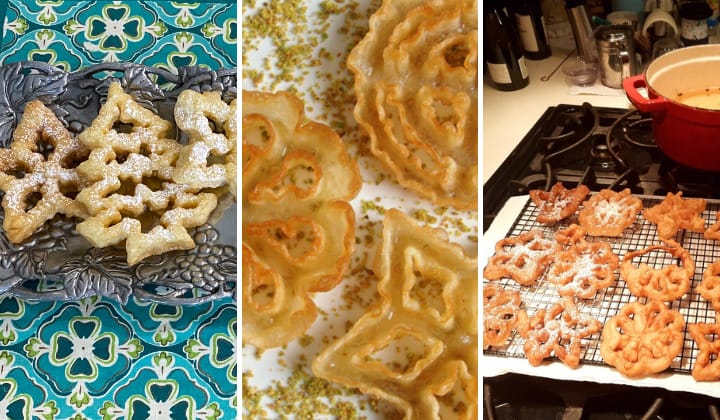
To make it, one would usually take an iron mould and dip it in hot oil. After that, dip it in the batter and fry it in the hot oil again. Then after a few seconds, shake the batter until it falls off according to the shape of the mould.
In Malaysia, it’s called Kuih Loyang because the word loyang refers to the iron mould. It’s also called Kuih Goyang because one would have to shake (goyang) the batter off the iron mould when frying.
Versions of the cookie
If you look at the original recipe, the most basic ingredients according to the European version are egg, flour, sugar, butter, milk and a little salt. While in Asian countries, the normal ingredients include eggs, sugar, coconut milk, and rice flour.
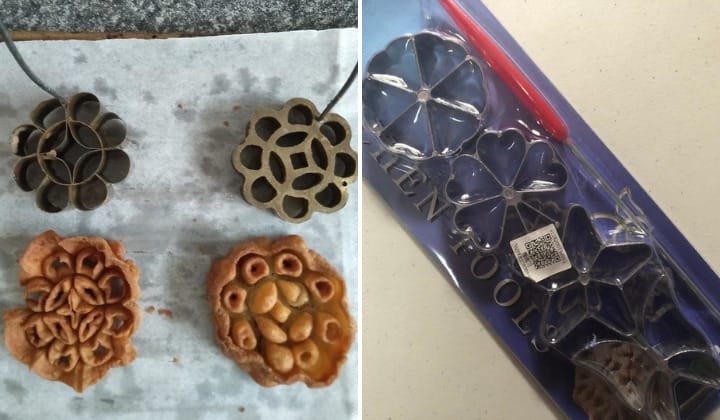
The iron moulds can also be in different shapes such as flowers, stars, snowflakes, butterflies, hearts and even Christmas trees, according to specific cultures.
Some other name for the Rosette cookie includes Chinese pretzels (China), Kue kembang goyang (Indonesia), Rose de coque (Portugal), Fuljhuri pitha (Bangladesh), Flores manchegas (Spain) and many many more variations that we’re too overwhelmed to list down. The list is ENDLESS.
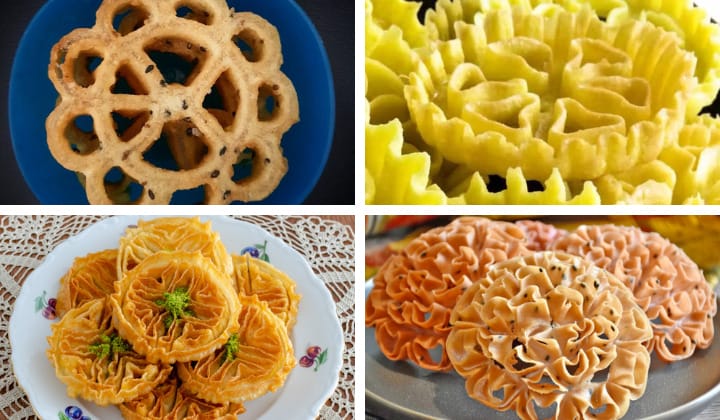
(Credit: @ashjjkk / Twitter, Island Smile, Sibel Yalcin, Crafts to Crumbs)
In addition, while most versions of the rosette cookies are plain, here are some variations of the cookie with other extra ingredients.
Rosettbakkels, rosetter (Norway) – Coated with powdered sugar
Rosettenküchlein, Eisenküchle (Germany) – Cinnamon flavoured with sugar at the top
Bunuelos de viento (Mexican) – Coated with vanilla-flavoured sugar with a hint of cinnamon
Nan Panjara (Iran) – Flavoured with rose water, sprinkled with crushed nuts
Demir tatlisi (Turkey) – Flavoured with yoghurt, dipped in sugary syrup and served with crushed nuts (pistachios mainly)
Kanom dok jok (Thailand) – Limewater and black sesame seeds are added
Kokis (Sri Lanka) – Infused with turmeric
Achappam, Achu Murukku, Gulabi Puvvulu (India) – Commonly spiced with sesame, cumin and cardamom
Since Malaysians are multiracial, we have variations of Kuih Loyang too! Some are plain, some are with sesame seeds, and some are even colourful!
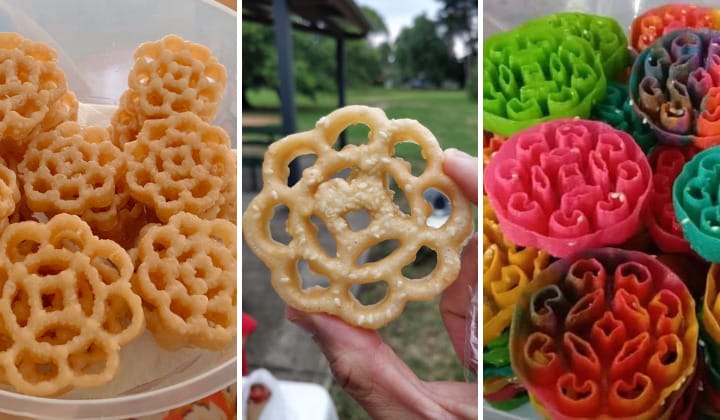
So, this surely puts things in perspective for us, doesn’t it? Just because it’s been in our cultures for centuries, doesn’t mean that it originates from our culture.
But even though it started in Scandinavian countries, when the recipe travelled the world, it settled in different cultures and we made our own versions of the cookie. And that’s what makes it authentic to us.
Now, try telling your grandma that fact while she fries the batter. Do you think she’ll accept it? Or will she just katok you with the loyang and curse you as an ungrateful brat?
READ MORE: Kuih Goyang ‘Fancy’ & Dihiasi Kaviar, Siapa Sebenarnya Reynold Poernomo Ini?
Share your thoughts with us via TRP’s Facebook, Twitter, Instagram, or Threads.





